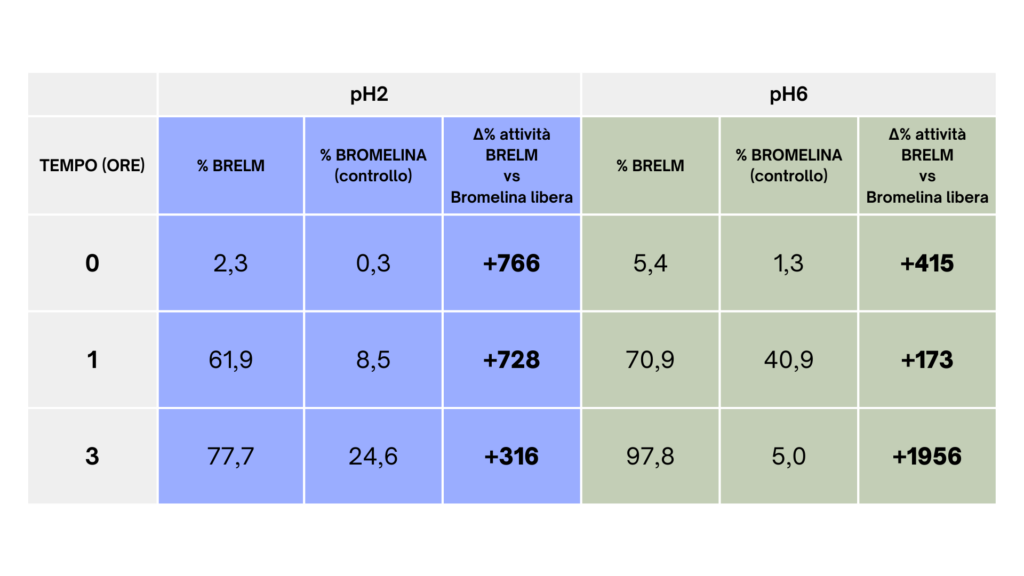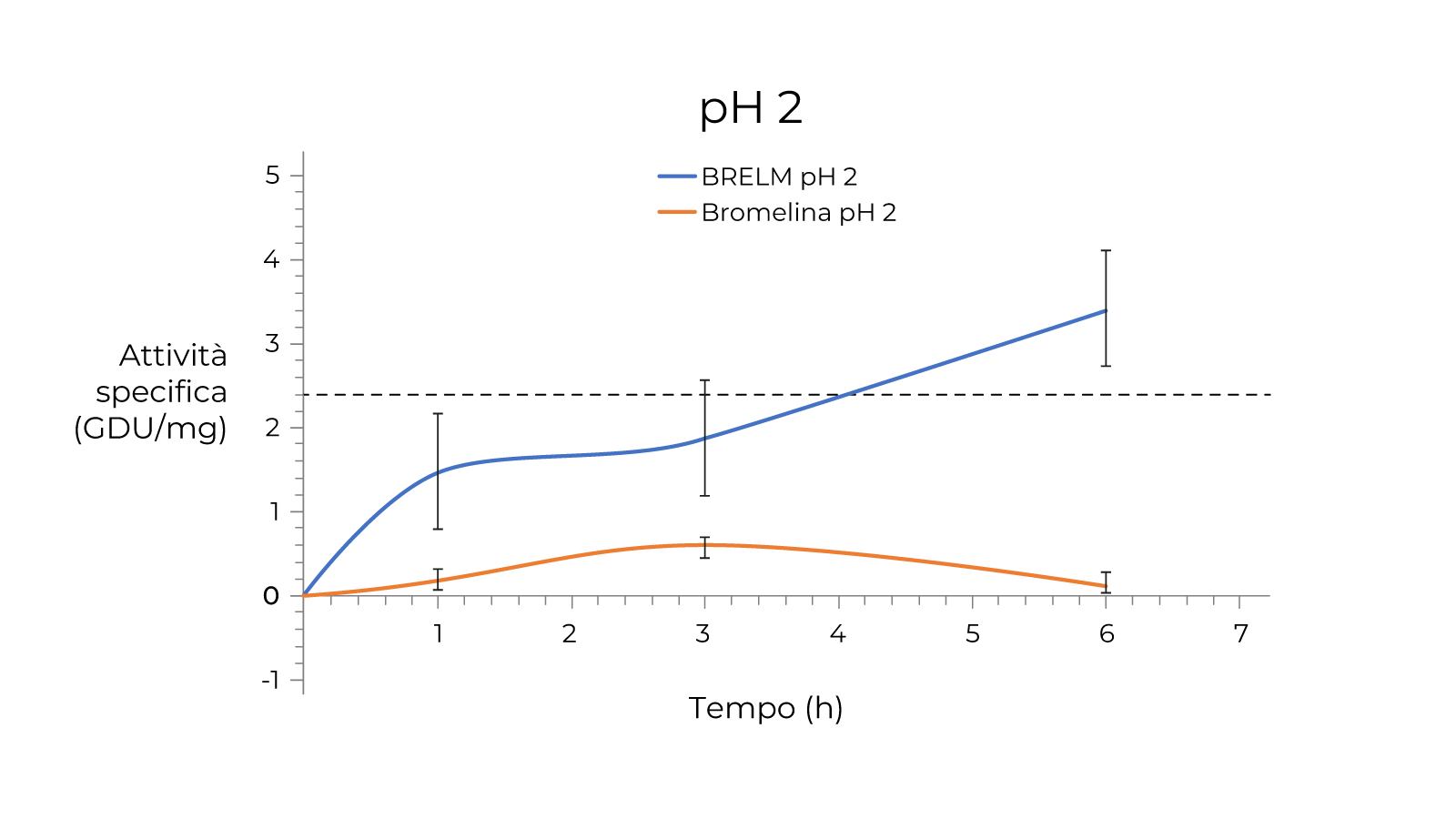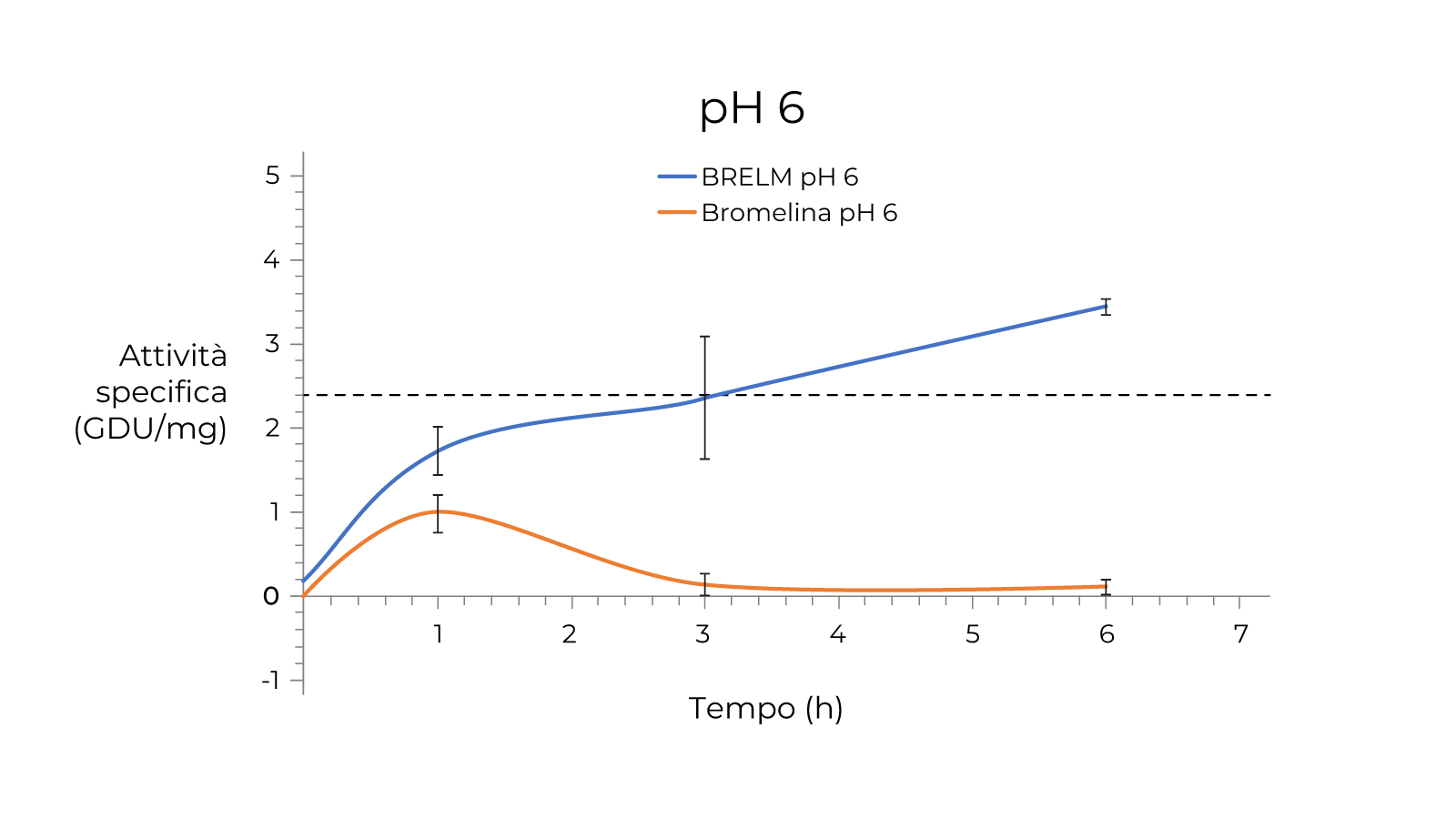BRELM® TECHNOLOGY

Native to South America, the pineapple was first introduced to Europe in the early 16th century. The most widely grown variety in the world is Ananas Comosus L.
The properties of pineapple are mainly due to its distinctive active ingredient: Bromelain, which is widely found in the woody pith of the fruit, known as the “stem.”
Bromelain works by reducing inflammation, which is associated with:
- Inhibition of the production of pro-inflammatory molecules.
- Increased vascular tone and reduced microcirculatory permeability.
In addition, it seems to break down micronuclei in the fibrous phase of cellulite, facilitating the drainage of fluids and toxins in the microcirculation.
Therefore, pineapple’s main effects are detoxification and improving microcirculation and digestive processes.
Detoxification:
Understanding the Benefits and Uses of Pineapple

Improvised diets, often unbalanced and based on overly refined products, combined with an increasingly unhealthy environment, can overload metabolic and excretory pathways, causing discomfort such as a feeling of heaviness, water retention, cellulite, abdominal bloating, and a feeling of heavy legs.
Detoxification means ridding the body of all that is undesirable, helping it restore normal pathways of eliminating harmful substances.
In particular, pineapple provides significant benefits through its diuretic action, which promotes the drainage of body fluids by eliminating water and metabolites through the kidney system.
Detoxification also means maintaining proper circulation of body fluids, especially in the peripheral areas, to avoid stagnation and congestion. Stagnation and congestion are the leading causes of inflammation, oxidative stress, and the accumulation of metabolic waste, which can lead to edema and cellulite. Improved circulation allows less tired and sensitive legs, hips, thighs, and buttocks with fewer imperfections.
The Structure and Functions of Microcirculation

Microcirculation includes small-caliber blood vessels such as capillaries, venules, and arterioles. In the capillaries, in particular, blood flow slows considerably. This allows for exchanging oxygen, nutrients, and hormones with the tissues and removing metabolic waste. Microcirculation also includes lymphatic capillaries, which drain interstitial fluid from cells.
When the delicate balance of nutrient exchange, fluid drainage, and metabolic waste is disrupted, fluid congestion occurs, leading to swelling and water retention.
Several factors contribute to these disorders, including prolonged standing or sitting, wearing high heels, heat, female hormones that cause vasodilation, and a diet high in fat and sugar.
Cellulite and microcirculation are closely related. Microcirculatory disturbances are the leading cause of cellulite, which causes inflammation and circulation deterioration. Cellulite, or edematous fibro-sclerotic radiculopathy, is an alteration of fatty tissue in the hypodermis influenced by factors such as hormones, gender, age, stress, and poor eating habits.
Cellulite evolves through several stages:
- In Stage 1 (edematous), there is an initial change in microcirculation with increased vascular permeability and plasma accumulation in the interstitial spaces. This condition is reversible.
- In Stage 2 (edematous), there is further stagnation of fluid and toxins.
- In Stage 3 (Fibrous), micronodules of disorganized collagen fibers form, impeding metabolic exchange and damaging the connective tissue of the dermis, giving the skin an “orange peel” appearance.
- In Stage 4 (sclerotic), micronodules coalesce and become palpable; connective tissue thickens in response to inflammation. The appearance of the “orange peel” is pronounced, and this stage is considered irreversible.
Bromelain is effective in the aesthetic treatment of cellulite. Its anti-inflammatory and anti-edematous action counteracts water retention, improving skin tone and appearance.
Digestion:
Process and Role of Bromelain

Digestion is the process by which food is broken down into simpler substances the body can absorb and use.
During digestion, the body absorbs beneficial nutrients and eliminates components that cannot be assimilated. From the earliest stages of digestion, several enzymes are involved in breaking down large molecules.
Digestion processes vary depending on the type of molecules involved (carbohydrates, lipids, proteins) and involve specific classes of enzymes. For example, the digestion of carbohydrates requires the action of amylase to break down polymer chains; lipases mainly digest lipids, and proteases digest proteins.
Bromelain promotes digestion through its proteolytic activity, i.e., it can break down amino acid chains to facilitate their absorption. Taken with meals, it effectively supports digestive function.

What is BRELM®?
BRELM® is a granule of bromelain, gum, and buffering amino acids.
By coating the bromelain, the granulation process protects it from degradation in an acidic environment, and the presence of histidine, a buffering amino acid, prolongs its half-life.
BRELM® is, therefore, able to preserve the enzyme's activity for up to 6 hours.
In Vitro Test
L’attività di BRELM® è stata testata in vitro mediante saggio enzimatico su emoglobina. Il test è stato condotto simulando il pH gastrico (pH=2) e intestinale (pH=6).
I risultati del saggio sono mostrati nei grafici sottostanti.

At pH=2, bromelain granules (BRELM®) show higher activity than pure bromelain. In addition, the time course of activity is different between the two. While pure bromelain shows a Gaussian pattern, with a slight increase in activity at 3 hours of incubation followed by a rapid decline until the sixth hour, the BRELM® product shows activity that increases rapidly until 1 hour and stabilizes until the sixth hour.
At acidic pH, bromelain tends to self-digest over time, which explains the decrease in activity and titer of pure bromelain (control). At the same time, this may indicate the ability of the formulation to protect bromelain from self-digestion.
In simple terms, for the same initial activity, BRELM® is 3 to 20 times more active over time than free bromelain.

BRELM® has demonstrated its protective effect even at pHs closer to neutrality (pH=6).
While free bromelain loses its activity after 3 hours, BRELM® protects it for up to 6 hours.

Simply put, BRELM® retains up to 20 times more activity than the control at both acidic and near-neutral pH.
In summary, BRELM®:
- Preserves the enzymatic activity of bromelain, extending its half-life.
- Protects bromelain from denaturation.
- Enhances bromelain activity.
REQUEST A FREE SAMPLE:

Via Monte Baldo, 6 - 37069 Villafranca di Verona
tel +39 045 9617967
commerciale@ipingredients.com
IP Ingredients – P.Iva 04713350231 – Company policy – Cookie – Privacy